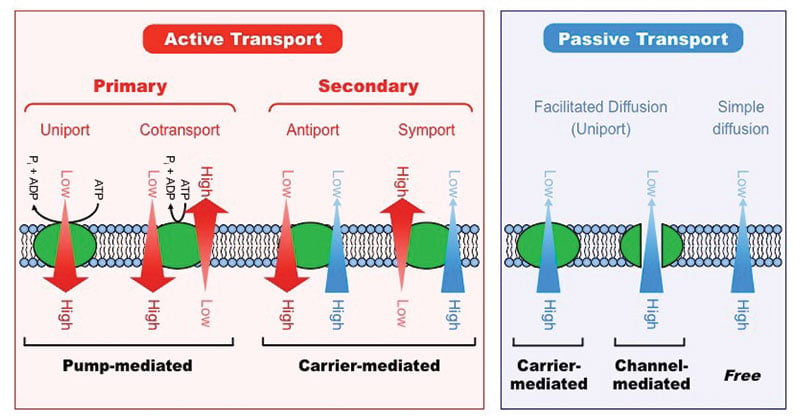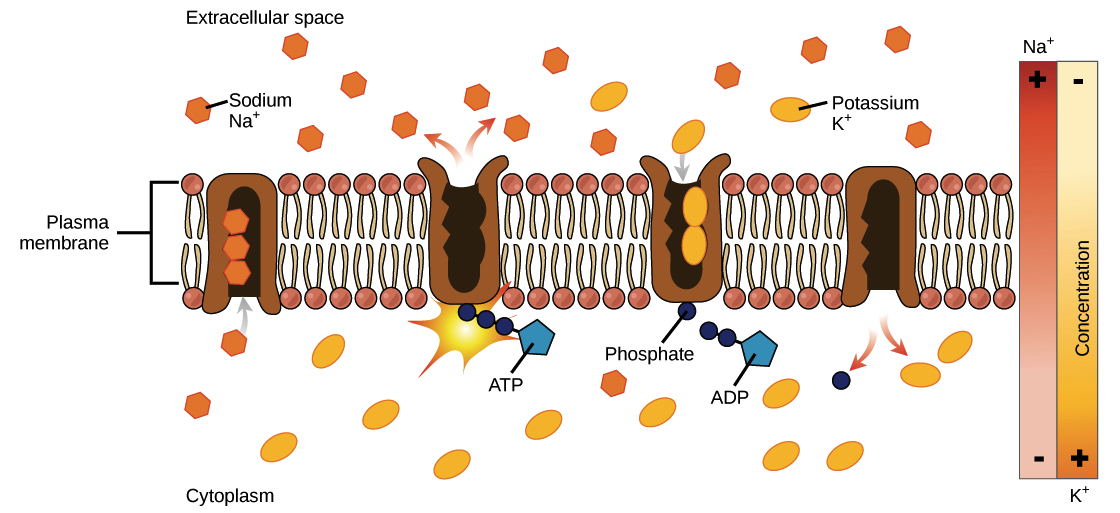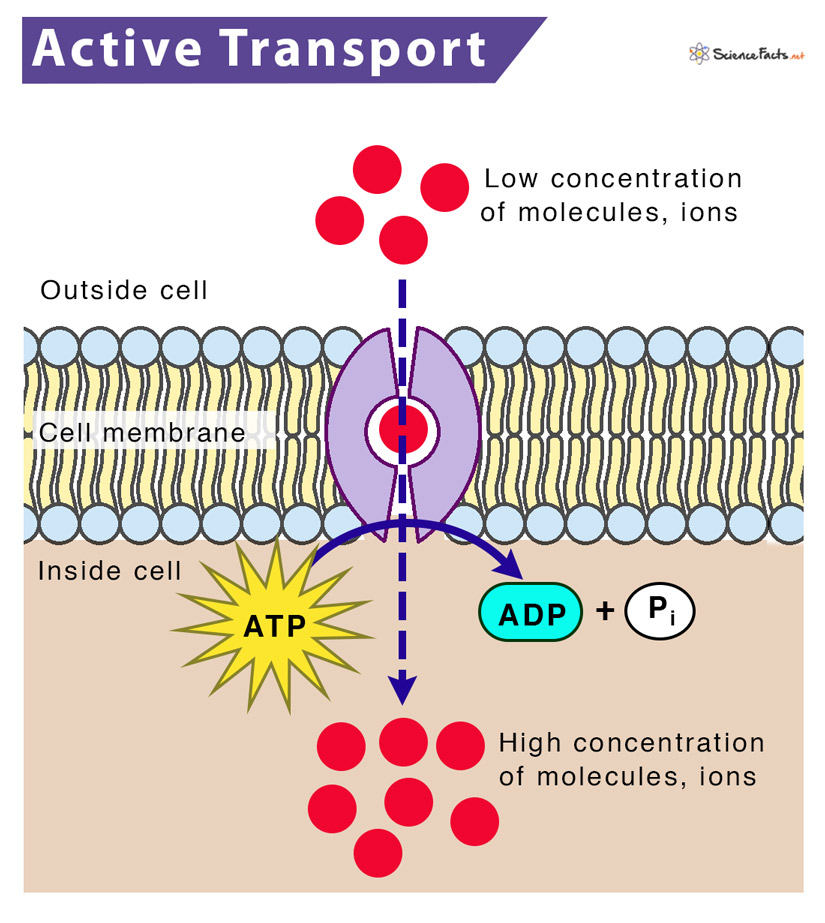What Molecule Is Necessary for Active Transport
Dialysis is the transport of any other molecule through a semipermeable membrane due to its concentration difference. While the first concept is well established the second is new.

Active Vs Passive Transport Definition 18 Differences Examples
In the cell membranes are ions glucose and amino acids.

. What molecule is used to supply short little bursts of energy in the cell. What molecule is the source of the carbon dioxide that is released in cellular respiration. Add your answer and earn points.
Vaehjade3 is waiting for. Small molecules or ions transport proteins- protein pumps found in the membrane many cells use protein pumps to move. Active transport is important for cellular function because it moves important items such as calcium and glucose into and out of cells.
Both processes can be reversed by back pressure. Examples of active transport include the Sodium-Potassium Pump primary transport the Naglucose symporter secondary transport and endocytosis and exocytosis. Examples of active transport include the uptake of glucose in the intestines in humans and the.
Water crosses cell membranes by passive transport and by secondary active cotransport along with ions. What key molecule is needed in any Active Transport scenario. After refraction which side of the membrane is positive.
Active transport is a process that is required to move molecules against a concentration gradientThe process requires energy. Active transport in plants. 1 See answer rebeccabarnes5679 is waiting for your help.
Active transport is a process in which a living membrane expends energy to move substances across it. As major part of cell membrane is made up of lipids and since they are impermeable to water so water soluble substances require active transport for their movement across cell membrane. 3 Show answers Another question on Biology.
Active transport is usually associated with accumulating high concentrations of molecules that the cell needs such as ions glucose and amino acids. Electrochemical gradients and secondary active transport. The energy needs of a human population are not affected by.
Inside an organism the liquids outside and inside the various cells. Active and passive transport are systems that are meant for transporting molecules through the cell membraneA cell membrane is a multi-task component that gives structure to the cell while protecting the cytosolic content from the outer environmentThe movement of molecules from in and out of the cell is guided by the phospholipid bilayer sustaining a delicate homeostasis. Energy is needed for active transport because of cell membranes.
Why is it necessary for the electron transport chain to perform active transport that pumps protons out of the matrix and into the intermembrane space. ATP active transport B. Active transport moves molecules against their concentration gradient from an area of low concentration to an area of high concentration.
Uniporters symporters and antiporters. What type of organic molecule is needed for active transport. Active transport requires energy to move substances from a low concentration of that substance to a high concentration of that substance in contrast with the process of osmosis.
Nov 15 2015. Why is it necessary for the nervous system to have neurotransmitters. It is usually powered by ATP.
ATP is the molecule that. If a substance must move into the cell against its concentration gradient that is if the concentration of the substance inside the cell must be greater than its concentration in the extracellular fluid the cell must use energy to move the substance. Proteins sit on the cell membrane with one part inside and one part outside the membrane.
When energy ATP is needed the movement is known as active transport. As a result molecules are moved across concentration gradients using chemical energy for example ATP. Protein is the organic molecule that is needed for a active transportI hope this helpsJurgen rebeccabarnes5679 rebeccabarnes5679 01122018 Biology High School answered What type of organic molecule is needed for active transport.
Active transport is a type of cellular transport in which molecules such as ions glucose and amino acids are transferred across a biological membrane to a place where there are already plenty of them. What word is used to describe differences of individual organisms. Active transport is most commonly accomplished by a transport protein that undergoes a change in shape when it binds with the cells fuel a molecule called adenosine triphosphate ATP.
The two modes of transport allow cellular H2O homeostasis to be viewed as a balance between H2O leaks and H2O pumps. Calcium potassium and sodium ions. This is the currently selected item.
The movement of molecules across a membrane without the input of energy is known as passive transport. Mitochondria are what supplies energy to cells for active transport. Active transport is the movement of dissolved molecules into or out of a cell through the cell membrane from a region of lower concentration to a region of higher concentration.
What molecule is necessary in order for a muscle to contract A. Active transport mechanisms require the use of the cells energy usually in the form of adenosine triphosphate ATP. If these items dont cross the membrane the cell can die.
What supplies the energy for active transport. Is the movement of sodium and potassium during refraction active or passive transport.

Active Transport Features Types And Significance

No comments for "What Molecule Is Necessary for Active Transport"
Post a Comment